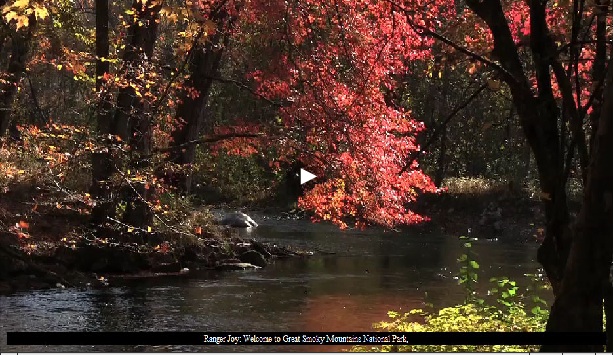
The Smokies are known for their amazing biodiversity, lush forests and unique high elevation ecosystem. Watch this video to find out how a changing climate may impact the resources that make the Smokies so special.
Monitoring Change in Great Smoky Mountains National Park
Ranger Joy: Welcome to Great Smoky Mountains National Park, spanning across the North Carolina and Tennessee state lines, it is home to some of the greatest biodiversity within the park system.
Change is natural for our world, day-to-day changes in temperature, humidity, etc. we call weather. This what you see when you walk out your door. Climate on the other hand, is what you expect to experience when you walk out the door. It is the average of weather over a period of at least 30 years and longer.
Here in our beloved Smoky Mountains, we have many questions about the impacts of a changing climate. In fact, we have more questions than answers but asking the right questions is part of the process of understanding how to best protect the Smokies in a time of uncertainty.
I’ll let ranger Paul discuss some of these questions we’re asking here in the Smokies.
Ranger Paul: Overall, the earth is getting warmer. Predictions for the Southern Appalachian Mountains show that temperatures may warm less here however warming in other areas is expected to impact our weather patterns. Our biggest concern is the amount of precipitation in Smokies and how it is distributed in time and space.
Historically, most precipitation falls as steady light rain and our highest mountain peaks are often under a blanket of fog. As climate changes we are expecting a shift to more extreme weather events such as summer and winter storms
In the Smokies, park managers are studying what this may mean for the beautiful park we protect.
How will more intense storms impact streams and the life within?
Will stress from changes in moisture and temperature impact the ecosystem’s ability to adapt to threats from exotic species or acid deposition?
To discover how park plants and animals are responding to climate change, we need many eyes out in the park making observations. If you are participating in one of our school programs you may be assisting with this research by collecting data for our monitoring programs
Changes like the timing of leaf color turning, are important to keep track of. The study of the timing of these changes is called “phenology”. Park visitors, including students help rangers make observations about phenology and these observations are entered into a database allowing for comparisons over time.
Some of the timing of these changes is triggered by temperature. Unusual warm spells in winter can trigger some trees to begin to open their buds too early, and if the temperature gets cold again, the leaves freeze. This puts the tree under stress, making it more susceptible to diseases and insects.
The timing of other events, such as bird migration, may be controlled more by day length, which isn’t changing. In the Smokies, if the hatching of caterpillar eggs is controlled by temperatures, but the birds keep to the same migration schedule, birds may face a shortage of food for continued migration or for feeding young.
Researchers have been tracking bird migrations in the Smokies for years, so we have some baseline data to help us recognize if there are any shifts.
At our highest elevations we have many endemic species that are only found in the Smokies. Our highest elevations may be affected by changes in moisture and temperature.
Is their habitat shrinking?
Are plants and animals shifting up in elevation seeking refuge from warming temperatures at lower elevations?
What is happening to stream temperatures and flow?
Brook trout are native to the cooler, high-elevation streams here in the Smokies. Brook trout are already squeezed between warm water at lower elevations, where they compete with non-native rainbow and brown trout, and the acidified headwaters of some streams. If the streams warm further, they may have no place left to reproduce.
The spruce fir moss spider is a tiny tarantula that is a federally endangered species and lives under damp moss at high elevations. If fog lessens due to changing moisture distribution, the moss may dry out and the habitat this spider depends on may disappear.
Ranger Joy: There are many things you can do to help reduce your impact on climate change.
Get involved and be a part of making a difference by participating in citizen science projects, which help us monitor changes in ecosystems in the Smokies
You can study phenology in your own back yard by recording when trees and flowers bloom or observing birds at a feeder.
For additional things you can do to help reduce your impact you can visit these websites:
National Phenology Network
www.usanpn.org
Project Bud Burst
www.budburst.ucar.edu
Citizen Science Central
www.birds.cornell.edu/citscitoolkit
